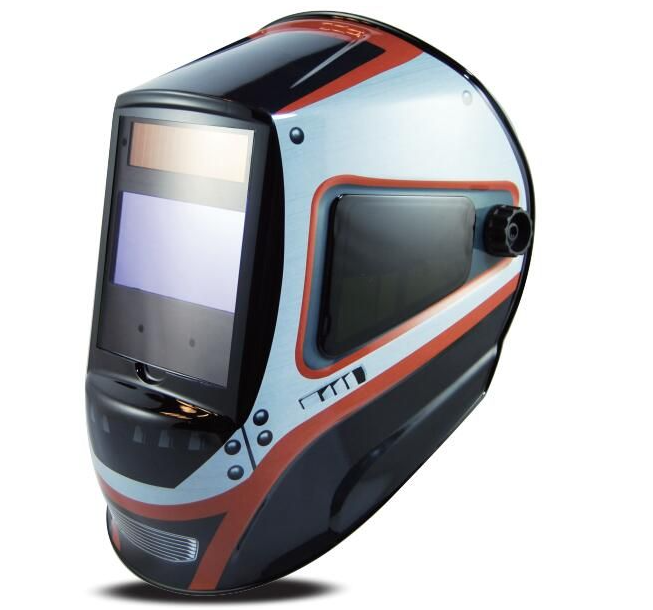Welding is a precision craft that requires both skill and the right equipment to ensure safety and quality work. One essential piece of safety gear for any welder is the auto-darkening welding helmet. This helmet automatically adjusts its lens shade in response to the welding arc, protecting the welder’s eyes from harmful ultraviolet (UV) and infrared (IR) rays. However, like any piece of equipment, auto-darkening welding helmets can sometimes malfunction. Understanding the common issues, their causes, and how to fix or prevent them will help keep your helmet working properly and ensure your safety. This guide will walk you through the most common problems with auto-darkening welding helmets and offer practical solutions.
1. Helmet Not Darkening or Responding to Light
One of the most frustrating issues is when the auto-darkening helmet fails to darken in response to the welding arc. The lens should automatically transition from a light state to a dark shade when the arc is struck, but if it doesn't, you may be exposed to dangerous UV rays.
Causes:
Dead or Weak Battery: Most auto-darkening helmets run on a battery that powers the sensors and the LCD lens. A weak or dead battery can cause the helmet to fail to darken properly.
Sensor Issues: The sensors responsible for detecting the welding arc may be malfunctioning or dirty, preventing them from triggering the lens to darken.
Incorrect Settings: Many helmets have adjustable settings for sensitivity and delay. If these settings are misadjusted, the helmet may not react to the welding arc as expected.
Fixes:
Replace the Battery: Check the battery of your helmet. If it's old or running low, replace it with a new one, ensuring it’s installed correctly.
Clean the Sensors: Dust, debris, or grime on the sensors can affect their performance. Clean the sensors with a soft cloth or brush to remove any obstructions.
Adjust Sensitivity Settings: Ensure the sensitivity setting is appropriately adjusted to your welding environment. Too low a sensitivity will prevent the helmet from darkening in response to the arc.

Side View Welding Helmet
2. Helmet Stays Dark Even When Not Welding
Another common issue is when the helmet stays dark, even after you’ve stopped welding or before you’ve even struck the arc. This can be distracting and uncomfortable, as it makes it difficult to see clearly during setup or when positioning your materials.
Causes:
Battery Problems: A malfunctioning or dead battery can cause the lens to stay dark continuously. This can be a result of the battery no longer providing proper power to the lens control.
Improper Calibration: Some helmets require recalibration of the light sensor to function correctly. If the calibration is off, the helmet might remain dark even without exposure to the welding arc.
Worn-out Lens: Over time, the auto-darkening lens may lose its ability to switch back to its light state. If the lens is too worn out or damaged, this issue may occur.
Fixes:
Replace the Battery: As with the first issue, check and replace the battery if necessary.
Recalibrate the Helmet: Follow the manufacturer’s instructions to recalibrate the light sensor, ensuring that the helmet returns to its normal light state when not in use.
Inspect the Lens: If the lens is worn out or scratched, consider replacing it. A damaged lens can affect the helmet's performance, including its ability to clear up properly.
3. Helmet Lens Flickers or Fades
If your helmet lens flickers or fades during welding, it can cause eye strain and compromise your vision. This can be particularly distracting when performing delicate or detailed work that requires full visibility of the weld pool.
Causes:
Battery Power: A low battery can cause the lens to flicker or fade. The helmet may not have enough power to maintain the auto-darkening feature properly.
Worn-out Auto-Darkening Filter: Over time, the auto-darkening filter may degrade or lose its effectiveness, leading to intermittent darkening.
External Light Interference: Bright ambient light or reflections from nearby surfaces can interfere with the sensors, causing the lens to flicker or react erratically.
Fixes:
Replace the Battery: Always check the battery first. A fresh battery can solve issues with flickering and fading.
Replace the Lens: If the lens is worn out or damaged, replace it with a new one. Most auto-darkening helmets allow for lens replacement.
Avoid External Light Interference: Ensure you are working in an environment where bright light or reflections are not interfering with the sensors. Position yourself to avoid direct sunlight or strong artificial lights.
4. Distorted or Unclear View Through the Lens
A distorted or unclear view through the helmet lens can make welding more difficult, especially when trying to maintain precision. If your helmet’s lens isn’t providing a clear view, it could be due to several factors.
Causes:
Dirty Lens: The lens may have accumulated dirt, smoke, or residue from the welding process, causing a foggy or unclear view.
Scratches or Cracks: Over time, the lens can become scratched or cracked, distorting your vision and making it harder to see the weld pool clearly.
Improper Shade Adjustment: If the shade setting is too dark for the type of welding you’re doing, it can make it difficult to see the welding area clearly.
Fixes:
Clean the Lens: Regularly clean the lens with a soft cloth to remove smoke, soot, and dirt. Avoid harsh chemicals that could damage the lens.
Inspect for Damage: Check the lens for cracks or deep scratches. If damaged, replace the lens as soon as possible to avoid vision issues.
Adjust the Shade Setting: Ensure that the helmet's shade is set appropriately for the welding task at hand. For most MIG or TIG welding, a shade between 9-13 is typical.
5. Helmet Won’t Fit Properly
Comfort and fit are crucial for effective welding. A helmet that doesn’t fit properly can be uncomfortable, distracting, and may not provide proper protection. If your helmet feels loose or uncomfortable, it could lead to poor visibility or even safety risks.
Causes:
Incorrect Sizing: Helmets come in various sizes, and using a helmet that doesn’t fit your head properly can cause discomfort and poor visibility.
Worn-out Headgear: The headgear inside the helmet can wear out over time, causing the helmet to lose its adjustment settings and fit poorly.
Fixes:
Adjust the Headgear: Most welding helmets allow for adjustments to the headgear. Ensure the straps are tightened or loosened to fit comfortably and securely.
Replace Worn-out Headgear: If the headgear is damaged or worn, consider replacing it with a new one to restore proper fit and comfort.
Prevention Tips for Extending Helmet Lifespan
While most auto-darkening welding helmet issues can be fixed easily, proper care and maintenance can help prevent many of these problems from occurring in the first place.
Regularly Clean the Helmet: Keep both the lens and sensors clean to prevent debris buildup that can interfere with performance. Wipe down the helmet after each use.
Store in a Safe Place: Store your welding helmet in a cool, dry location when not in use. Extreme temperatures and humidity can damage the helmet’s internal components.
Inspect Before Use: Check the battery, sensors, and lens regularly to ensure they are working properly before each welding session.
Replace Worn Components: Replace the battery, lens, and headgear as needed to
keep the helmet in optimal working condition.
By taking these preventive measures, you can extend the lifespan of your auto-darkening welding helmet and minimize the chances of running into issues during your work.






